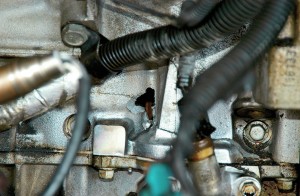A recent article on SuperChevy.com explains the difference between these two parts terms and I am reprinting it on our blog. Both terms are not interchangeable and have definite differences. Here is what James Berry of SuperChevy has to say:
Remanufactured Components
To remanufacture means to make the part as close to new as possible. A remanufactured part is one that has been completely manufactured to the standard of a new part. If the part has wearable components, those are automatically replaced. All core material is closely inspected and checked against original equipment specifications for correct dimensional tolerances. Most replacement parts are new or inspected used parts. If new, the parts should be made in the same production processes as original equipment and testing should be performed to manufacturer specifications and original production standards. If used, the part should be cleaned and inspected for any wear, stress cracks, or and other defects before it is used.
On a remanufactured engine the mechanical tolerances should be restored either by re-machining or by installing the necessary inserts to restore the unit to its original mechanical tolerances. Either way, the engine should meet the standard for OEM tolerances, durability, and quality.
New pistons, connecting rods, rings, bearings, camshafts, lifters, and oil pump should be installed. All related bearing surfaces are restored and the upper half of the engine—such as the cylinder heads—should be rebuilt. Usually the only component from the old engine that is used is the block. This part should only be reused if it is in rebuildable condition.
These same rules should apply to other remanufactured auto parts, whatever they may be. You will find that remanufactured auto parts usually carry a longer warranty than rebuilt parts.
A damaged engine block
Rebuilt Components
To rebuild is to recondition a part by cleaning, inspecting, and replacing only worn or broken parts. Serviceable parts are reused if they fit within the manufacturer’s acceptable wear limits. The quality of rebuilt components varies from one rebuilder to another and many only come with a limited warranty.
Before rebuilding, all of the components within the unit are equally worn. After rebuilding, some of the components could be new, some could be from a different used unit, and some of the components could be original. The thing to remember is that the “used” components may still function properly and do not need replacing, but they are still worn to some degree.
There are other factors that can cause wear so as not to be visible to the human eye, such as heat stress and cracks. Consequently, this could cause other problems with the part, resulting in premature failure. There have been many instances where I personally have installed up to three rebuilt engines before getting one that actually worked correctly. This is even more common on rebuilt electrical parts.
This brings us to another term that is sometimes misunderstood: “core.” This is when you exchange your broken part for one that has already been rebuilt. A core for a rebuilt part such as an engine may also be referred to as the casting.
For example, if an engine is rebuilt, maybe just the bearings and piston rings needed to be replaced. So the original crankshaft, pistons, and connecting rods were still in good shape and would be reused instead of using new or ones. The final result will usually save the customer money up front. Just remember this rebuilt part is just that and may fail sooner than a new part would. So if you don’t mind possibly changing the part out several times if there is a problem and want to save a few dollars, this could be the part for you.

